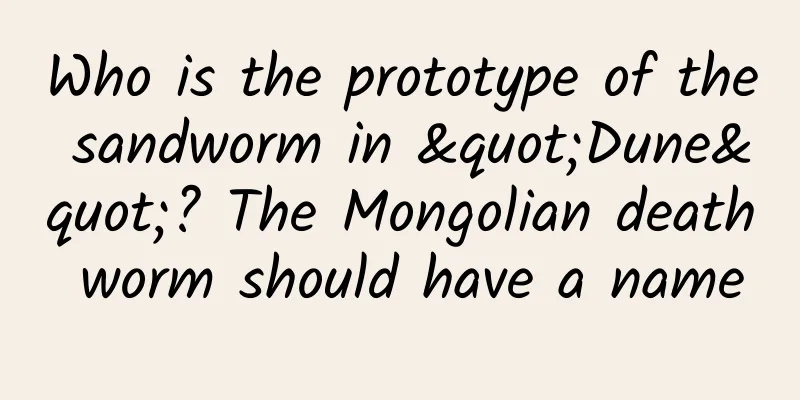After staying in space for a month, the human heart will show signs of aging丨Tech Weekly

|
Compiled by Zhou Shuyi and Wang Xiang Turbulent sky in Van Gogh's 'Starry Night' matches scientific theory The mottled starlight and swirling clouds in "The Starry Night" are thought to reflect Vincent van Gogh's turbulent state of mind. A new study shows that the turbulent sky in "The Starry Night" is consistent with scientific theory, and Van Gogh had a deep intuitive understanding of the mathematical structure of turbulent flow. The relevant paper was published on September 17 in Physics of Fluids. Vincent van Gogh's "The Starry Night" was created in 1889. Turbulence is a natural phenomenon that occurs in a wide range of fluids, such as water currents, ocean currents, blood flow, rolling storm clouds, and smoke columns. Turbulence is essentially a chaotic state in which larger vortices continuously form and disintegrate into smaller ones. In this study, scientists used digital images of "The Starry Night" to analyze the scales of 14 major rotating shapes in the painting to study whether they conform to physical theories when large-scale vortices and small-scale vortices collide and interact with each other. The vortex/eddy in "Starry Night" Unable to directly measure the movement of air currents in the sky in the painting, the researchers precisely measured brush strokes and compared the size of those strokes to the mathematical scales predicted in turbulence theory. To analyze the physical motion, they used the relative brightness, or luminosity, of different pigment colors. It was found that the size, relative distance, and intensity of the 14 vortices in "Starry Night" followed the Kolmogorov theory in fluid dynamics. This theory, proposed by Soviet mathematician Andrei Kolmogorov in the 1940s, describes the mathematical relationship between flow velocity fluctuations and the rate of energy dissipation. The study also found that at the smallest scale, the pigments mixed with some background vortices in the way predicted by turbulence theory, following the statistical pattern of Batchelor's law - a law that mathematically describes how small particles (such as algae drifting in the ocean or dust in the wind) are passively mixed by turbulent flows. The spatial scale of some typical brushstrokes of the vortex in "Starry Night" "Of course, Van Gogh may not have known these equations, but he likely spent a lot of time observing turbulence in nature," said the researcher. "I believe this physical relationship was ingrained in his mind, so when he created his famous 'Starry Night', he naturally imitated real flows." A deeper understanding of turbulence could help improve weather forecasts, reduce flight turbulence, and many other processes. Scientists have long faced difficulties in describing turbulence in fluid dynamics, and have not yet found an effective way to predict the phenomenon, and a complete explanation remains a major mystery in physics. New research reveals the mysterious and fantastic sky in Van Gogh's masterpiece "The Starry Night", which hides a striking similarity to turbulence theory, showing the subtle connection between art and science. Van Gogh showed a unique perception of turbulence in his subconscious mind. On that night in 1889, he may have seen far more than the excitement and loneliness of the starry sky. (AIP Publishing) To understand human evolution, scientists tested the DNA of cheese from about 3,500 years ago Who moved my cheese? In the millions of years of human evolution, food fermentation itself is an ancient and wise "fable": different groups of people and cultures have their own preferences for food fermentation, and the transformation of livelihood patterns and agricultural development are also closely related to the evolution of fermentation technology. A new study, through the study of ancient microbial genomes of three groups of kefir cheese dating back about 3,500 years, revealed the history of human application, spread and domestication of kefir lactic acid bacteria, providing a new way of thinking for understanding human evolution and its interaction with the environment. The relevant paper was published in Cell on September 25. A comparison of a Bronze Age cheese sample unearthed from the Xiaohe Cemetery in Xinjiang with a glass tube cap with an outer diameter of about 1.8 cm. | Yang Yimin, School of Humanities, University of Chinese Academy of Sciences The samples of this study are the earliest cheese products discovered so far - three groups of kefir cheese unearthed from the Xiaohe Cemetery in the Tarim Basin of Xinjiang. They are derived from kefir yogurt and are made by fermenting kefir grains (similar to koji) in milk. The spread of dairy fermentation technology is largely accompanied by human migration and interaction, which has promoted the evolution of lactic acid bacteria that play an important role in fermentation. The research team independently designed a probe for the whole genome of lactic acid bacteria and extracted high-quality lactic acid bacteria genomes from samples of ancient kefir cheese. Through phylogenetic relationship analysis, the study found that there are two differentiated branches of kefir lactic acid bacteria used for fermentation. One branch conforms to the mainstream route of spreading from the Caucasus to the coastal areas of Europe, Asia and Southeast Asia, while the other branch mainly includes strains distributed in the inland areas of East Asia (including Tibet). The strains used by the ancient population in the Tarim Basin in Xinjiang to ferment kefir yogurt came from this branch and were at the base. This indicates that there is another route for the spread of kefir yogurt production technology from Xinjiang to the inland areas of East Asia through technical and cultural exchanges. (A) Plan of the Xiaohe Cemetery in Xinjiang; (B) Mummy sample unearthed from the Xiaohe Cemetery in Xinjiang (called the "Xiaohe Princess", with the cheese sample wrapped around her neck); (C) Three groups of Bronze Age cheese samples from which microbial genomes were obtained in this study; (D) Microbial DNA composition in cheese samples The authors of the study believe that the differentiation of the two lineages of kefir lactic acid bacteria is likely the result of the spread of their common ancestor among different populations due to different migration routes after it was first domesticated. This means that different ancient populations migrated and communicated along different routes in the process of applying and domesticating fermentation microorganisms. In addition, the study found that the long-term use and domestication of humans may have also affected the evolution of kefir lactic acid bacteria. Compared with the kefir lactic acid bacteria in the Bronze Age in Xinjiang, two horizontally transferred gene clusters related to reducing intestinal inflammatory responses appeared in the modern kefir lactic acid bacteria strains in Tibet. These gene clusters not only facilitate the survival of lactobacilli in the human intestine, but also promote intestinal function. This is probably related to the preference of the people at that time for kefir grains carrying different lineages of kefir lactic acid bacteria. Relevant experts commented that this study is a very rare ancient DNA study in the field that has unearthed completely new data, and it has brought new insights into the migration, exchanges and microbial domestication history of people in the central Eurasian steppe. After a month in space, the human heart will show signs of aging What effects will long-term stay in space and low gravity environment have on the body? A study published in PNAS on September 23 found that human heart tissue began to weaken, its beating rhythm became irregular, and it experienced molecular genetic changes similar to aging after staying in space for a month. The researchers cultivated human induced pluripotent stem cells (iPSCs) and differentiated them into cardiomyocytes, and then installed the resulting myocardial tissue samples in a heart-on-a-chip that simulates the human heart environment. The device allows the samples to contract and relax like a beating heart, and monitors their contraction strength and pulsation rhythm in real time through sensors. In March 2020, 48 samples were sent to the International Space Station on SpaceX's Dragon spacecraft, and then 10 seconds of myocardial tissue monitoring data were transmitted back to the ground every 30 minutes. The analysis found that after 12 days on the International Space Station, the contraction strength of heart muscle tissue was almost halved compared to a control group that remained on the ground, and this weakening was still obvious even after nine days back on Earth. In space, heart rhythms became more irregular over time. By day 19, the intervals between each beat of the tissue had increased by more than five times. However, this irregularity disappeared after returning to Earth. Microscopic observation of the recovered tissues showed that the sarcomeres responsible for muscle contraction became shorter and more disordered; the mitochondria also became swollen and fragmented. RNA sequencing showed that the expression of genes related to inflammation and oxidative damage in the tissues was upregulated; at the same time, the expression of genes required for normal heart contraction and mitochondrial function showed signs of downregulation. The researchers said that the second batch of myocardial tissue samples was sent to the International Space Station in 2023 to screen potential drugs to protect astronauts from the adverse effects of the low-gravity environment. Rewriting the textbook? This carbon-carbon bond has only one electron Nearly a century after the "covalent bond with only one electron" was first proposed, a study published in Nature on September 25th realized the first single-electron covalent bond between two carbon atoms. This discovery is not only crucial for a deeper understanding of chemical bond theory, but also provides new insights into further understanding of chemical reactions. In molecules, two atoms form a covalent bond by sharing an electron pair. Most covalent bonds are single bonds, which consist of a single pair of shared electrons, or double and triple bonds, which consist of two or even three pairs of electrons. In 1931, chemist Linus Pauling proposed that there might be single-electron covalent bonds, which are formed by a single unpaired electron, but they are very unstable - they break easily and have a strong tendency to release or capture electrons to restore their paired electrons. This type of bond is called a single-electron sigma bond. To achieve this, the researchers tried to remove an electron from the existing carbon-carbon two-electron covalent bond by iodine oxidation. Based on hexaphenylethane (HPE), they designed the modified spirodibenzocycloheptatriene (DBCHT) compound HPE 1. Due to the steric hindrance effect of the surrounding aromatic groups, the central carbon-carbon single bond was greatly elongated, resulting in an increase in the HOMO energy level of the molecule, which means that it is difficult for electrons elsewhere in the molecule to replace the removed electrons. Takuya Shimajiri, an author of the paper and a researcher at the University of Tokyo, said that past attempts to remove electrons left chemical bonds that were too weak and therefore broke too quickly for accurate chemical analysis, but the molecules they used this time were still stable enough after removing the electrons. The researchers used X-ray diffraction and Raman spectroscopy to analyze it, and after density functional theory calculations, they determined that it had a stable covalent bond consisting of a single electron, ultimately confirming the existence of a carbon-carbon single-electron σ bond. The result constitutes the first experimental evidence of a single-electron carbon-carbon sigma bond. Some chemists say this is a discovery of great significance. It can be expected that the realization of a single-electron sigma bond in carbon will help to better understand the basic properties of chemical bonds and may prompt chemists to create a whole new family of molecules. Monkeys also behave abnormally under stress Did your mind go blank in the exam room? Did you lose your voice during the defense? Did you want to make a buzzer-beater on the court but found that you couldn't lift your legs? Relax, we are all the same - even monkeys. A study published in Neuron on September 12 showed that "collapse" under heavy pressure is related to a decrease in the activity of neurons in the brain that prepare for exercise, and it is not unique to humans. The researchers set up tasks to have rhesus monkeys move a computer cursor to a designated location as quickly and accurately as possible, and then give them a reward. Before each task began, the researchers prompted the monkeys whether the reward was small, medium, large, or a "jackpot." Jackpots are rare and unusually generous, and are a high-risk, high-reward scenario. They also implanted electrodes into the frontal lobe area of the monkeys' brains that controls movement to observe changes in neuronal activity under different reward scenarios. The results showed that as the amount of the reward increased, the monkeys' neural activity became more active and in better condition. However, in the situation where the reward was the jackpot, the neuronal activity related to motor preparation weakened. "Motor preparation" is relative to "motor execution" and includes an individual's cognitive activities such as attention, organization, and planning before movement-similar to aiming at the target before pulling the trigger. The weakening of related neuronal activity means that the monkey is not well prepared and therefore performs poorly. The study believes that as the potential reward increases, neural activity will reach a peak. Beyond this point, no matter how generous the reward is, neuronal activity will begin to weaken, causing the brain to deviate from its optimal state. Special Tips 1. Go to the "Featured Column" at the bottom of the menu of the "Fanpu" WeChat public account to read a series of popular science articles on different topics. 2. Fanpu provides a function to search articles by month. Follow the official account and reply with the four-digit year + month, such as "1903", to get the article index for March 2019, and so on. Copyright statement: Personal forwarding is welcome. Any form of media or organization is not allowed to reprint or excerpt without authorization. For reprint authorization, please contact the backstage of the "Fanpu" WeChat public account. |
>>: 775 new cases in 6 days, infection can be transmitted even without meeting! Urgent reminder →
Recommend
3 perspectives to help you understand Toutiao’s content production strategy
Toutiao is a recommendation engine product based ...
Electric Technology Car News: Volvo S90 has a heavy responsibility to compete with BMW, Mercedes-Benz and Audi, but its sales are dismal. How can it turn around?
For medium and large sedans, except for some pers...
Rare! The explosive "blue tears" shocked the screen! What are "blue tears"?
Experts in this article: Sun Xueqiong, Master'...
How to systematically make a competitive product analysis report?
The author starts with the concept of competitive...
Surprise! The log specification I set was promoted by the CTO throughout the company
Printing logs is an art, but it has long been neg...
Marketing promotion: How to use H5 to leverage 520 marketing!
520, which sounds like "I love you", is...
Heavy snowfall! Temperature drop! Avoid these roads during peak return hours →
Today (February 4) It is the seventh day of the S...
Douyin's seven traffic-generating products and core strategies
In recent years, the traffic of Douyin has grown ...
The heat that starts high and ends low! Is there an "absolute zero" between the sun and the earth?
The Sun, as the closest star to us, provides ligh...
Which computer rooms have the best cost-effectiveness for hosting servers?
With the rapid development of the Internet, more ...
Renault sets up autonomous driving demonstration zone in China, which will be open to tourists
Renault Group, Dongfeng Renault Automobile Co., L...
The largest cosmic structure is the Great Wall of the Universe. What is the Great Wall of the Universe? Let’s start with the solar system.
The universe contains a huge number of celestial ...
This year of autonomous driving: L4 is stuck before dawn
Two flowers bloom, each showing its own beauty. A...
Is the valuation of Meizu at US$6 billion reasonable?
It is well known that Meizu has fully learned Xia...
Update or real improvement? A quick overview of the highlights of WeChat's latest beta version
[[389439]] A few days ago, WeChat PC version was ...









